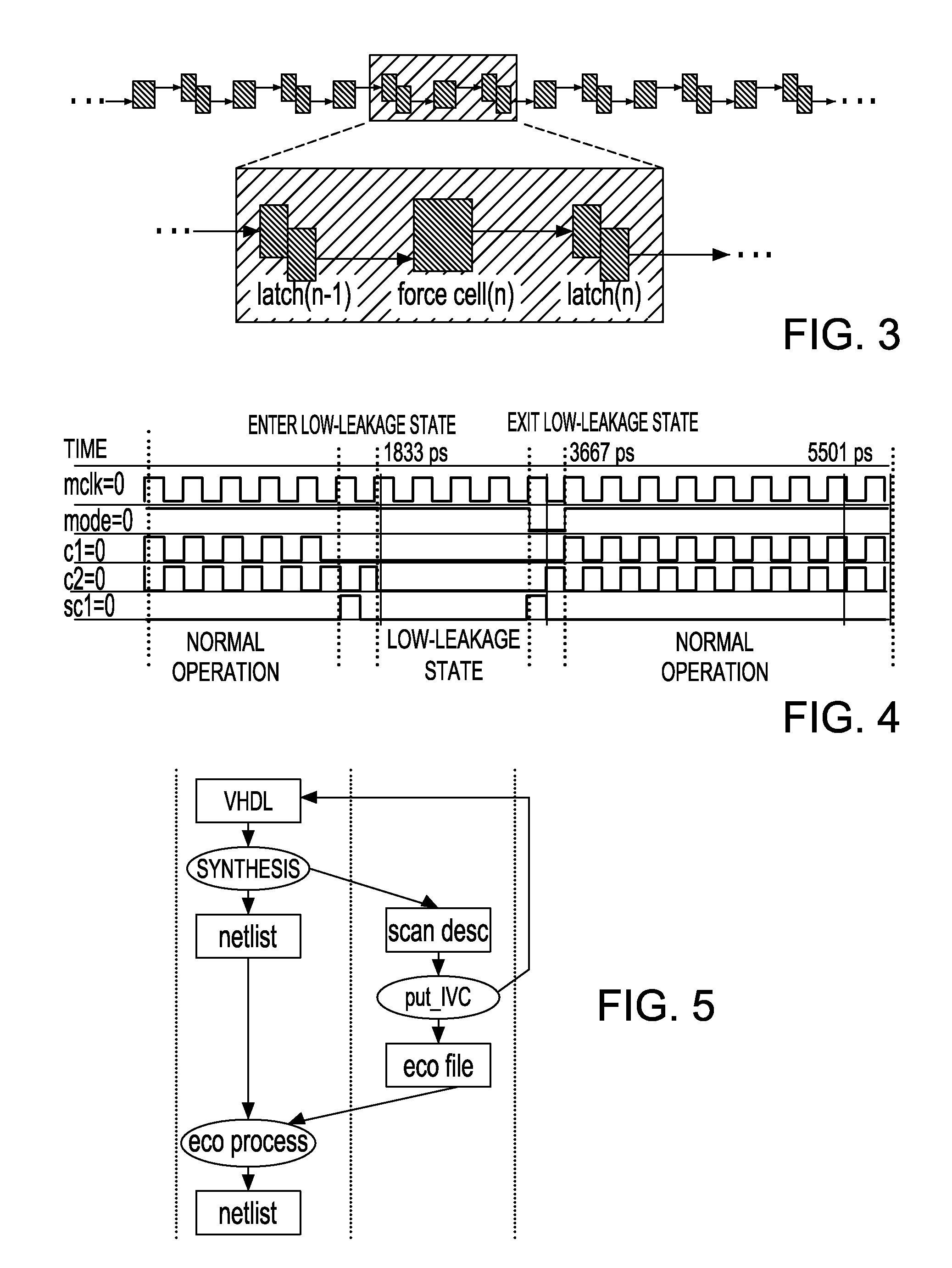Method and apparatus for on-the-fly minimum power state transition
- Summary
- Abstract
- Description
- Claims
- Application Information
AI Technical Summary
Benefits of technology
Problems solved by technology
Method used
Image
Examples
Embodiment Construction
[0018]At initialization, many conventional VLSI designs, i.e., microprocessors, do not initialize their flip-flops with a global reset, which would require routing a global signal and consequential degrading of the flip-flop timing. Such conventional designs instead use the scan-path to force an initial value at flip-flops, such as that design disclosed in commonly owned U.S. Pat. No. 7,100,144. Hence, in order to reset N latches, the conventional scan-path approaches require circa N clock cycles. The drawback is that where N is very large (which it is in many typical VLSI microprocessor designs), initialization time becomes critical, particularly in certain applications (e.g., Telco market, real time applications, etc).
[0019]The inventive method and VLSI scan chain structure disclosed herein provide for an improved level sensitive scan design (LSSD) or scan-path approach. The novel approach may be described broadly as “on-the-fly minimum power transition”. The “on-the-fly minimum p...
PUM
 Login to View More
Login to View More Abstract
Description
Claims
Application Information
 Login to View More
Login to View More - R&D
- Intellectual Property
- Life Sciences
- Materials
- Tech Scout
- Unparalleled Data Quality
- Higher Quality Content
- 60% Fewer Hallucinations
Browse by: Latest US Patents, China's latest patents, Technical Efficacy Thesaurus, Application Domain, Technology Topic, Popular Technical Reports.
© 2025 PatSnap. All rights reserved.Legal|Privacy policy|Modern Slavery Act Transparency Statement|Sitemap|About US| Contact US: help@patsnap.com



